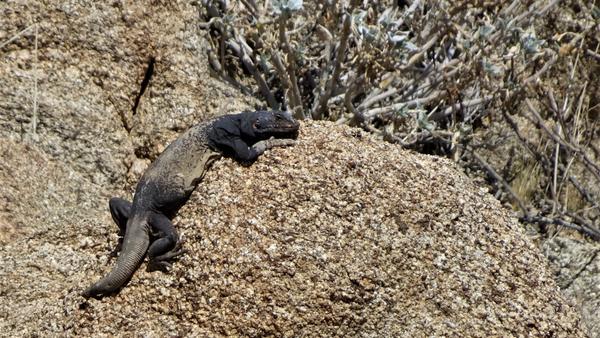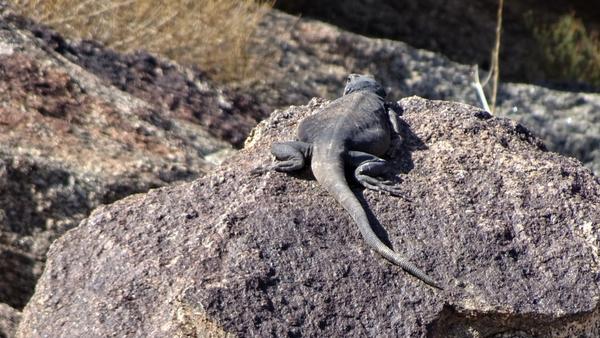What "arid" really means
“I think we are bound to, and by, nature. We may want to deny this connection and try to believe we control the external world, but every time there's a snowstorm or drought, we know our fate is tied to the world around us.” — Alice Hoffman
Before coming to live in the desert in 1985, we lived in the wilds of Mendocino County in northwestern California. Our cabin was nestled at the edge of one of the last unlogged watersheds, filled with redwood trees and Douglas firs. The summers were warm and dry, and the winters were cold and wet – a temperate rainforest. Really wet. Although the rainfall average was somewhere around 60” (152 cm), it seemed to rain more than that most of the time. The wettest year we experienced was twice the average (120” – 305 cm). That year we came up with new names to describe rain: a light mist, a driving mist, light rain, driving rain, and deluge. During deluge rains it was as if someone was spraying our windows with a fire hose. We once had 12” (30.5 cm) of rain in one day. Giant redwoods and salamanders thrive under such conditions. Then we moved to the hottest and driest, most arid desert in North America.
At the “wet” end of our desert valley, the rainfall average is close to 5” (13 cm) of rain per year; at the drier end of the valley, where we now live, the average rainfall is 3” (7.6 cm). Average (or “normal,” as it is so often erroneously referred to by the weather person on TV) is deceiving; each year is always either higher or lower than the average, so “normal” does not exist when we speak of rainfall, and average is not informative either. The wettest year since 1985 at the drier end of this valley was 8” (20 cm), nowhere near the wettest day we experienced in the redwoods. In the driest year just 0.1” (0.25 cm) fell on the desert floor – not even a light misty day in the redwoods. It took me some time to understand how life could exist at all here in the desert. But of course, life does exist here.
This is again shaping up to be one of those very, very dry years. So far this year, just 0.20” (0.5 cm) of rain has fallen in the drier end of the valley; 0.78” (almost 2 cm) of rain has fallen in the wetter, western portion of the valley. However, to really understand how and where life exists in a desert, we need to go beyond just rainfall amounts, and talk about aridity. Aridity seems at first blush to be just a synonym for rainfall levels, but it is far more complex and more important to the animals and plants that live here. Aridity is a function of the interplay between rainfall, temperature, and evaporation. North-facing slopes receive less solar radiation (here in the northern hemisphere), so are cooler, evaporate less moisture, and so there is more soil moisture available to quench the thirst of desert plants. Even with the exact same amount of rainfall, south-facing slopes are more arid than north-facing slopes. At elevations around 1000 m (3,000-3,500’) in our desert sky islands, you can hike down an east-west trending canyon with cacti, agaves, and creosote bushes on the south facing slope, whereas on the north facing slope there are junipers and pinyon pines – even though you could easily toss a rock from one slope to the other. That is the influence of aridity.
Since 1930, there have been seven years where the annual desert rainfall was less than 1 cm. What we are experiencing this year is uncommon, but far from being unprecedented. However, what is different are the levels of aridity the desert plants and animals will experience this year. That is because it is on average now 2-3° C warmer than it was in 1934, 1948, 1959, or 1972, and it is at least 1° C warmer than it was in 2002 and 2007 (all previous years when rainfall levels were similarly low). Warmer temperatures mean it is significantly more arid than any of those previous years. Such is the effect of climate change.
One of the reasons for the tremendous biodiversity of our desert is that variation in aridity. Each slope creates a different niche into which species exist and evolve. Just last week our active community scientists went on a field trip to the University of California’s Boyd Deep Canyon Desert Research Station. There, the station’s Director, Dr. Christopher Tracy, and Biologist, Mark Fisher, gave us a presentation on how a quintessential desert lizard, the chuckwalla, has evolved to these differences in desert aridity. Chuckwallas are vegetarians and so are intimately tied to their food plants, and to the levels of aridity that support those plants. On hyper arid sites, chuckwallas depend on fickle rains to produce annual plants for their food. But sometimes the rains do not come, like this year, and so there are no annual plants, like this year. These chuckwallas have evolved to these conditions by being shorter and stockier. When food is available, they gorge themselves and build tremendous fat deposits. Those fat deposits can allow them to survive dry years. Chuckwallas that exist on less arid sites are larger, relatively svelte looking. Food is more dependable, often including perennial plants that are available every year, and so they do not need to develop as large fat storage capacities as their cousins have.
In my own research I compared chuckwallas to another desert vegetarian, the desert tortoise. These two reptiles have taken very different paths to desert living. Tortoises have developed an enormous urinary bladder within which they can store water for up to a year or more. As they consume water in the plants they eat, or drink water when it is available, that water is stored in their bladder. Later in the fall, tortoises can eat dry, dead plants and using their bladder water still effectively digest the plant material. A problem arises in years, like this one, when there are no annual plants and no surface water (temporary pools). Unless they can find water to drink, their bladder water can become increasingly toxic as they concentrate plant toxins and salts without being able to dilute them with fresh water and then void the toxic bladder contents, replacing them with fresher water. Eventually, if they cannot void their bladder contents and replace them with fresh water, they can die.
Chuckwallas have no such enormous bladder, but they have another trick that the tortoises lack – a salt-excreting gland associated with their nose. Rather than concentrating salts and toxins, they “sneeze” periodically to rid themselves of those contaminants without wasting precious water. Another advantage for chuckwallas is they can climb into deep-rooted shrubs and trees to find leaves and flowers to eat, a food source unavailable to tortoises, which are terrible at climbing trees. As the desert becomes increasingly arid, chuckwallas have a slight advantage for survival.
Still, on desert slopes that have become too arid to support the chuckwalla’s preferred food plants, such as desert mallow and sweetbush, chuckwallas can no longer be found. Other researchers have posited that it will become too hot for desert lizards, like chuckwallas, to survive. Our research has pointed to aridity, not heat alone, as the primary indicator of where chuckwallas and other desert lizards can occur. At some sites lower in elevation, and so hotter, chuckwallas still thrive, but only along the edges of washes that concentrate rainfall flows from higher elevations and so support those critical food plants. The washes and canyon bottoms can become oases of reduced aridity.
Those differences in aridity, often so close to each other, create a much needed feeling of hope that as it gets hotter and more arid at least some species will be able to move those short distances to get a temporary reprieve. Temporary is the critical adjective.
Nullius in verba
Go outside, tip your hat to a chuckwalla (and a cactus), and be safe.

